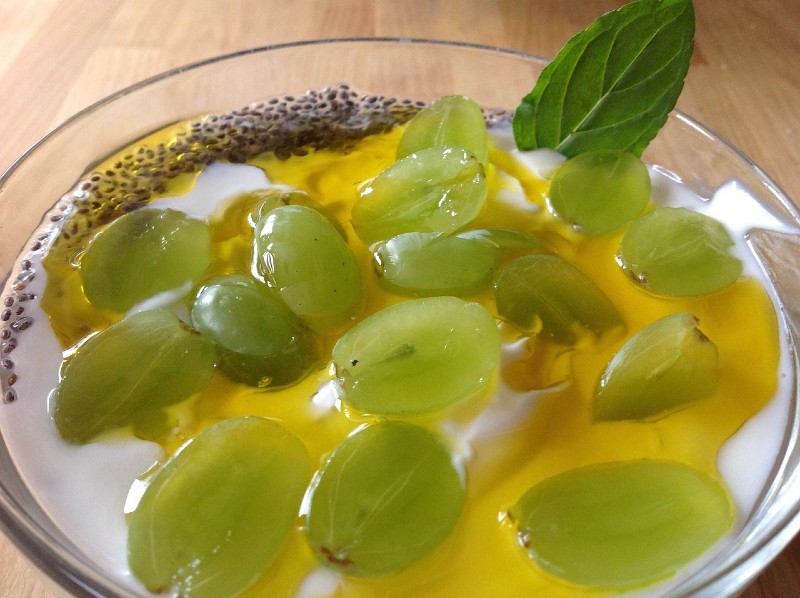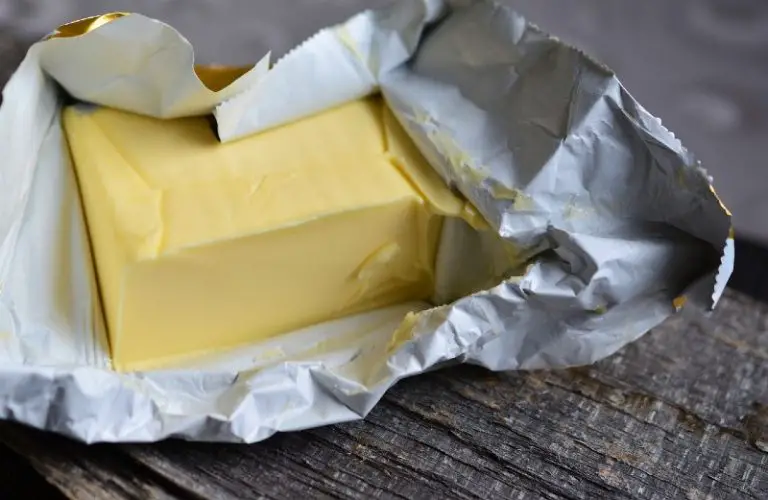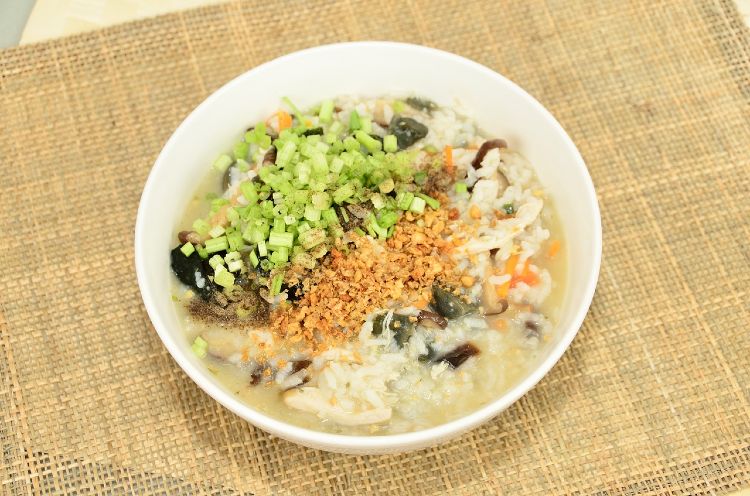Decode Your Pantry: Grapeseed Oil Substitutes for Every Need
Grapeseed oil is a versatile oil that is derived from the seeds of grapes, usually a byproduct of the winemaking process. It’s known for its high smoke point, which makes it a popular choice for various cooking methods like frying and sautéing. Beyond cooking, it is also widely used in beauty and skincare products, often touted for its mildness and nutrient-rich profile.
However, there are situations where you might need to explore alternatives to grapeseed oil. Whether it’s because of dietary preferences, allergies, or simply the unavailability of grapeseed oil, having a range of substitutes at your disposal can greatly enhance your cooking experience.
Common Cooking Substitutes for Grapeseed Oil
1. Canola Oil
When to Use
- High-Heat Cooking: Like grapeseed oil, canola oil has a high smoke point (around 400°F or 204°C), making it suitable for frying, sautéing, and stir-frying.
- Baking: Due to its neutral flavor and light texture, canola oil is also a good substitute for grapeseed oil in baking recipes like cakes, muffins, and cookies.
- Salad Dressings: If you’re making a salad dressing and run out of grapeseed oil, canola oil is an adequate alternative that won’t overpower other flavors.
Pros:
- High Smoke Point: Similar to grapeseed oil, canola oil is heat-stable, making it suitable for various cooking methods that require high heat.
- Neutral Flavor: Canola oil also has a mild, neutral taste, which makes it versatile for many culinary applications.
- Nutritional Profile: It is rich in omega-3 and omega-6 fatty acids and is lower in saturated fat compared to some other oils. This makes it a relatively heart-healthy option.
- Availability and Cost: Canola oil is widely available and is generally cheaper than grapeseed oil, making it a budget-friendly alternative.
Cons:
- Omega-6 Fatty Acids: Like grapeseed oil, canola oil is also high in omega-6 fatty acids. An imbalance between omega-6 and omega-3 in your diet can be detrimental to your health.
- Genetically Modified: Much of the commercially available canola oil comes from genetically modified crops, which might be a concern for some consumers.
2. Sunflower Oil
When to Use
- High-Heat Cooking: Sunflower oil has a high smoke point (about 440°F or 227°C), making it ideal for frying, deep frying, and sautéing.
- Baking: Its neutral taste and light texture are conducive to baking, from bread to cakes and pastries.
- Salad Dressings: If you’re out of grapeseed oil, sunflower oil can work well in vinaigrettes and other salad dressings, without overshadowing other ingredients.
Pros:
- High Smoke Point: Sunflower oil can handle high heat remarkably well, making it one of the most versatile options for cooking methods that require high temperatures.
- Neutral Flavor: Like grapeseed and canola oils, sunflower oil has a very mild, almost unnoticeable taste, allowing the flavors of your dish to shine through.
- Nutritional Benefits: Sunflower oil is high in Vitamin E and low in saturated fat, offering some health benefits.
- Availability: It’s widely available in most grocery stores, and usually at a similar or lower price point compared to grapeseed oil.
Cons:
- High in Omega-6: Sunflower oil is high in omega-6 fatty acids and low in omega-3s, which may not be ideal for those aiming for a balanced ratio of these fatty acids in their diet.
- Allergies: Sunflower oil is generally safe, but if you have a sensitivity or allergy to sunflower seeds, this oil would not be appropriate for you.
- Not Ideal for Some Dishes: For recipes that benefit from a richer flavor, like some Mediterranean dishes, sunflower oil may not be the most suitable substitute due to its neutral profile.
3. Safflower Oil
When to Use
- High-Heat Cooking: Safflower oil has an impressive high smoke point (around 450°F or 232°C), making it suitable for frying, deep frying, and sautéing.
- Baking: With its light texture and neutral flavor, safflower oil is an excellent alternative to grapeseed oil in baking applications.
- Salad Dressings: Safflower oil’s mild taste also makes it a good fit for salad dressings where you want other flavors to stand out.
Pros:
- High Smoke Point: Safflower oil is one of the oils with the highest smoke points, making it extremely heat-stable and a great option for high-temperature cooking methods.
- Neutral Flavor: Much like grapeseed oil, safflower oil has a very neutral flavor profile, making it versatile for a wide range of culinary uses.
- Nutritional Benefits: It is low in saturated fats and does contain some Vitamin E, making it a relatively healthy option for cooking.
Cons:
- High Omega-6 Content: Like other common vegetable oils, safflower oil is high in omega-6 fatty acids, which could be a downside for those looking to balance omega-6 and omega-3 intake.
- Cost and Availability: While generally available, it might be slightly more expensive than more common oils like canola or sunflower, depending on your location.
4. Olive Oil
When to Use
- Medium to High-Heat Cooking: Extra virgin olive oil has a smoke point ranging from 350°F to 410°F (175°C to 210°C), making it suitable for medium to high-heat cooking like sautéing or oven roasting. Refined olive oil has a higher smoke point and is better for frying.
- Salad Dressings: Olive oil is a classic choice for dressings, particularly in Mediterranean cuisine. Its robust flavor can add an extra dimension to salads.
- Baking: In recipes that can benefit from its richer flavor, olive oil can be used for baking bread, cakes, and muffins.
Pros:
- Nutrient-Rich: Olive oil is high in monounsaturated fats and antioxidants like polyphenols, offering various health benefits, including promoting heart health.
- Flavor: Extra virgin olive oil can add a depth of flavor to dishes that few other oils can match.
- Widely Available: Olive oil is one of the most commonly available oils, found in nearly all grocery stores.
Cons:
- Lower Smoke Point: Extra virgin olive oil has a lower smoke point compared to grapeseed oil, making it less suitable for high-heat cooking methods like frying.
- Strong Flavor: The distinct taste of olive oil can overshadow other flavors in a dish, making it less versatile than the neutral-flavored grapeseed oil.
- Cost: High-quality extra virgin olive oil can be relatively expensive, especially compared to grapeseed oil.
5. Avocado Oil
When to Use
- High-Heat Cooking: With a high smoke point ranging from 375°F to 520°F (190°C to 270°C), depending on the refinement, avocado oil is excellent for frying, sautéing, and grilling.
- Baking: Its relatively neutral flavor and light texture make it a good substitute for grapeseed oil in baking recipes.
- Salad Dressings: Avocado oil can be used in salad dressings where a slightly nutty, yet not overpowering, flavor is desirable.
Pros:
- High Smoke Point: The high smoke point of avocado oil makes it versatile for a range of cooking methods, including those that require high temperatures.
- Nutrient-Rich: Avocado oil is high in monounsaturated fats and also contains a good amount of Vitamin E, making it a nutrient-dense choice.
- Flavor: It has a mild, nutty flavor that can enhance a variety of dishes without being overpowering.
Cons:
- Cost: Avocado oil can be relatively expensive compared to other vegetable oils like canola or sunflower oil.
- Availability: While becoming more common, avocado oil is not as widely available as other types of oil, particularly in smaller or less well-stocked grocery stores.
- Slightly Stronger Flavor: Though mild, the nutty flavor of avocado oil can sometimes change the taste of dishes that require a completely neutral oil.
6. Corn Oil
When to Use
- High-Heat Cooking: Corn oil has a high smoke point of approximately 450°F (232°C), making it suitable for frying, deep frying, and sautéing.
- Baking: Due to its light texture and relatively neutral flavor, corn oil can also be used as a substitute for grapeseed oil in baking.
- Salad Dressings: Corn oil’s neutral taste works well in salad dressings where you want other flavors to be more prominent.
Pros:
- High Smoke Point: Like grapeseed oil, corn oil is highly heat-stable, making it a good option for high-temperature cooking.
- Neutral Flavor: Corn oil has a fairly mild flavor that won’t overpower dishes, making it a versatile option in cooking.
- Cost and Availability: Corn oil is generally less expensive than grapeseed oil and widely available in grocery stores.
- General-Purpose Use: Its properties make it a suitable general-purpose oil for both cooking and frying.
Cons:
- High in Omega-6 Fatty Acids: Corn oil is high in omega-6 fatty acids and low in omega-3s. Consuming too much omega-6 can lead to an imbalance that may have negative health impacts.
- Limited Nutritional Benefits: Compared to oils like olive or avocado, corn oil has fewer nutrients and antioxidants, making it a less nutritious option.
- Genetically Modified: Much of the commercially available corn oil is derived from genetically modified corn, which might be a concern for some consumers.
Specialized Cooking Substitutes
1. Coconut Oil
When to Use
- Low to Medium-Heat Cooking: With a smoke point ranging from 350°F to 385°F (175°C to 195°C), coconut oil is best suited for low to medium-heat cooking methods like sautéing or light frying.
- Baking: Coconut oil is often used as a substitute for butter or other oils in vegan baking. It lends a distinct flavor and aroma to baked goods.
- Flavor Infusion: In recipes where a tropical or nutty flavor is desired, coconut oil can add a unique flavor dimension.
Pros:
- Solid at Room Temperature: This characteristic makes coconut oil a useful substitute for butter or shortening in some recipes, such as pie crusts or cookies.
- Rich Flavor: Coconut oil can add a special tropical flair to dishes, making it a good choice for certain types of cuisine.
- Widespread Availability: Coconut oil has gained immense popularity and is readily available in most grocery stores, health food shops, and online.
Cons:
- Low Smoke Point: Coconut oil has a lower smoke point compared to grapeseed oil, making it unsuitable for high-heat cooking methods.
- Saturated Fat Content: Coconut oil is high in saturated fats, which could be a concern for those monitoring their cholesterol levels.
- Distinct Flavor: The pronounced flavor of coconut oil can be a drawback if a neutral-flavored oil is needed. It can dramatically change the taste profile of a dish.
2. Walnut Oil
When to Use
- Low-Heat Cooking or No-Heat Applications: Walnut oil has a low smoke point of around 320°F (160°C), making it unsuitable for high-heat cooking. It is best used for finishing dishes, drizzling over salads, or in sauces.
- Baking: In recipes where a nutty flavor would be beneficial, walnut oil can be a good option.
- Dressings and Marinades: The rich, nutty flavor of walnut oil makes it an excellent choice for salad dressings and marinades where its unique taste can shine.
Pros:
- Rich, Nutty Flavor: Walnut oil has a unique, deep nutty flavor that can add complexity and richness to a variety of dishes.
- Nutritional Benefits: High in omega-3 fatty acids and antioxidants, walnut oil can offer various health benefits when consumed in moderation.
- Special Culinary Uses: Its unique flavor profile makes walnut oil a gourmet choice for special dishes, elevating the flavors to the next level.
Cons:
- Low Smoke Point: The low smoke point of walnut oil makes it unsuitable for frying or any high-heat cooking methods.
- Cost: Due to its specialized uses and nutritional benefits, walnut oil tends to be more expensive than more common cooking oils like canola or sunflower oil.
- Shelf Life: Walnut oil can go rancid more quickly than other oils, requiring careful storage in a cool, dark place or even the refrigerator.
- Allergic Concerns: People with nut allergies should avoid using walnut oil both in cooking and skincare.
3. Sesame Oil
When to Use
- Low to Medium-Heat Cooking: With a moderate smoke point ranging from 350°F to 410°F (175°C to 210°C), sesame oil is best for low to medium-heat cooking, such as stir-frying or sautéing.
- Flavor Infusion: Often used in Asian cuisine, the robust, nutty flavor of sesame oil makes it a great finishing oil for dishes like stir-fries, salads, and soups.
- Marinades and Dressings: The unique flavor of sesame oil pairs well with other strong flavors like ginger and garlic, making it a popular choice for marinades and salad dressings.
Pros:
- Rich Flavor: Sesame oil adds a unique, nutty flavor to dishes, which can enhance a variety of recipes.
- Nutrient Profile: High in polyunsaturated fats and rich in antioxidants like vitamin E, sesame oil offers several health benefits, including improved heart health.
- Culinary Specialty: The unique flavor profile of sesame oil makes it a specialized choice for certain dishes, especially in Asian cuisines.
Cons:
- Moderate Smoke Point: While higher than some specialty oils, the smoke point of sesame oil is still moderate, making it less versatile for high-heat cooking methods.
- Strong Flavor: The robust flavor of sesame oil can overpower other flavors in a dish, so it may not be the best substitute for the neutral taste of grapeseed oil.
- Cost: Good quality sesame oil can be relatively expensive, especially when compared to more commonly used oils like canola or vegetable oil.
Baking Substitutes
1. Butter
When to Use
Baking:
- Cookies and Cakes: Butter can add richness and a tender crumb to baked goods like cookies and cakes.
- Pie Crusts: The solid nature of butter at room temperature helps create flaky layers in pastries like pie crusts.
- Quick Breads: Butter is commonly used in recipes for muffins and quick breads to add moisture and flavor.
Cooking:
It’s worth noting that butter can also be used in cooking where a rich, creamy texture and flavor are desired, such as in sauces or sautés. However, butter has a lower smoke point, around 302°F (150°C), so it is not suitable for high-heat cooking like frying.
Pros:
- Rich Flavor: One of butter’s key advantages is its rich, creamy flavor, which can add depth to baked goods.
- Texture: The fat in butter contributes to the tender, flaky texture in pastries and the moist crumb in cakes and muffins.
- Availability: Butter is widely available and is a staple in many households, making it a convenient substitute.
- Variety: With salted, unsalted, and cultured options, you can choose the best type of butter for your specific baking needs.
Cons:
- Lower Smoke Point: Butter is not suitable for high-heat cooking methods due to its lower smoke point compared to grapeseed oil.
- Saturated Fats: Butter is high in saturated fats, which can be a concern for those watching their cholesterol levels.
- Not Dairy-Free: Butter is not suitable for those with dairy allergies or lactose intolerance, or for vegan recipes.
- Caloric Density: Butter is more calorie-dense than many oils, so it may not be the best option for those watching their caloric intake.
2. Vegetable Shortening
When to Use
Baking:
- Pie Crusts and Pastries: Vegetable shortening’s high fat content and solid state at room temperature make it excellent for achieving flaky textures in pie crusts and pastries.
- Cookies and Cakes: It can be used to create a softer, more tender crumb in cookies and cakes compared to butter.
- Frying: With a high smoke point around 360°F (182°C), vegetable shortening can be used for frying doughnuts or other sweet treats.
Cooking:
Although this section focuses on baking, vegetable shortening can also be used in certain cooking applications that require high heat, such as frying, due to its high smoke point.
Pros:
- High Smoke Point: Vegetable shortening has a high smoke point, making it versatile for both baking and frying.
- Neutral Flavor: Unlike butter, vegetable shortening has a neutral flavor, making it a more direct substitute for the similarly neutral grapeseed oil.
- Long Shelf Life: When stored correctly, vegetable shortening has a longer shelf life compared to many other fats, making it a convenient pantry staple.
- Texture: Its high fat content helps achieve a flaky, tender texture in baked goods.
Cons:
- Trans Fats: Many brands of vegetable shortening contain trans fats, which are associated with negative health effects like increased risk of heart disease.
- Nutritional Value: Shortening is high in calories and offers little in terms of nutritional benefits compared to other oils rich in essential fatty acids and vitamins.
- Not Suitable for All Diets: Vegetable shortening is not a good option for those following vegan or plant-based diets if it’s made from animal fats, though plant-based options are available.
- Flavor Limitations: While its neutral flavor can be a benefit, vegetable shortening lacks the rich, nuanced flavors that oils like olive or coconut can bring to a dish.
3. Apple Sauce
When to Use
- Cakes and Muffins: Apple sauce is often used as a fat substitute to make cakes and muffins healthier and more moist.
- Quick Breads: It works well in recipes that call for moisture but not necessarily fat, like certain quick breads.
- Cookies: While the texture may be slightly different, apple sauce can replace some or all of the fat in cookie recipes.
Other Applications:
Apple sauce is not typically used as a cooking oil substitute in sautéing or frying due to its water content and different physical properties.
Pros:
- Lower in Fat: Apple sauce provides a way to reduce the fat content of baked goods, making it a healthier alternative to oils and fats.
- Adds Moisture: It adds a nice moist texture to baked goods, which can be beneficial in recipes that might otherwise turn out dry.
- Natural Sweetness: The natural sugars in apple sauce can add sweetness to recipes, potentially allowing for reduced sugar content.
- Vegan and Allergen-Free: Apple sauce is a plant-based, allergen-free option suitable for vegan and vegetarian diets.
Cons:
- Texture Changes: Replacing oil with apple sauce can affect the texture of baked goods, making them less crisp or more cake-like.
- Flavor Impact: Apple sauce will add a slight fruitiness to recipes, which might not be desirable in all cases.
- Not Versatile: Apple sauce can’t be used as a direct replacement for grapeseed oil in cooking applications like frying or sautéing.
- Shelf Life: Once opened, apple sauce needs to be refrigerated and has a shorter shelf life than most oils.
4. Yogurt
When to Use
Baking:
- Cakes and Muffins: Yogurt is an effective fat substitute that can make cakes and muffins moist and fluffy.
- Quick Breads: It is also a popular ingredient in quick bread recipes, helping to maintain moisture and texture.
- Cookies: Yogurt can be used to replace some or all of the fat in cookie recipes, although the final product may have a softer, cake-like texture.
Cooking:
While this section mainly focuses on baking, some people use yogurt as a base for creamy sauces or dressings, but it is generally not a substitute for oil in frying or sautéing.
Pros:
- Lower Fat Content: Using yogurt can reduce the overall fat content in baked goods, making them a bit healthier.
- Adds Moisture: Yogurt contributes to a moist, tender crumb in cakes and quick breads.
- Nutritional Boost: High-quality yogurts can add protein, calcium, and probiotics to your recipes.
- Versatile: Yogurt can be used in both sweet and savory baked goods, offering a range of culinary possibilities.
Cons:
- Texture Changes: Replacing oil with yogurt will change the texture of your baked goods, generally making them softer and potentially less crisp.
- Tangy Flavor: Yogurt has a tangy flavor that may not be suitable for all types of baked goods.
- Not a Direct Substitute: Yogurt can’t be used as a replacement for oil in frying or high-heat cooking methods.
- Dairy Concerns: Being a dairy product, yogurt is not suitable for those with dairy allergies or lactose intolerance, and it’s not a vegan option unless plant-based yogurts are us
Frequently Asked Questions (FAQs)
In this section, we address some of the most common questions people have when looking for grapeseed oil substitutes. The goal is to provide quick and concise answers that help you make an informed decision.
1. Can I use any oil to replace grapeseed oil?
No, not all oils are a direct substitute for grapeseed oil due to differences in flavor, smoke point, and nutritional content. It’s important to choose an oil that aligns with your cooking method and flavor profile.
2. What’s the best substitute for grapeseed oil in salad dressings?
Olive oil is generally a good substitute for salad dressings due to its rich flavor profile. If you prefer a neutral taste, you can use canola or safflower oil.
3. Can I substitute grapeseed oil with butter in baking?
Yes, you can substitute butter for grapeseed oil in most baking recipes. However, the texture and flavor may differ slightly. Be sure to consider the moisture content as well, since butter is not 100% fat like oil.
4. Can I use coconut oil as a direct substitute for grapeseed oil?
Coconut oil has a strong flavor and a lower smoke point, making it unsuitable as a direct substitute in many recipes. However, it can be used in specific types of cooking and baking where its flavor and texture are desired.
5. How do I measure the right quantity when substituting?
For most oils, a 1:1 substitution ratio works. However, for thicker or more concentrated substitutes like apple sauce or yogurt, you may need to adjust the quantity. Always start with a small amount and adjust based on the recipe’s needs.
6. Can I use multiple substitutes in a single recipe?
Yes, you can mix and match different substitutes depending on the desired texture and flavor. For instance, you can use half olive oil and half apple sauce in a cake recipe to balance out moisture and health benefits.
7. What’s the best substitute for frying?
High smoke point oils like canola, sunflower, or safflower oil are generally recommended as substitutes for grapeseed oil in frying.
8. Are plant-based yogurts good substitutes in baking?
Yes, plant-based yogurts can be used as a dairy-free and vegan alternative in baking. However, they may alter the texture and flavor slightly, so it’s advisable to test a small batch first.





